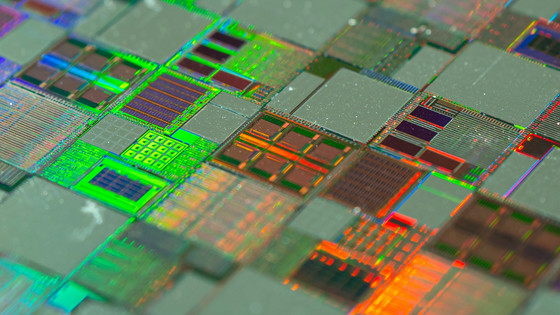TSMC announces 1.4nm-class process technology 'A14', mass production is scheduled to start in 2028, and is expected to enhance the AI functions of smartphones

By
On April 23, 2025, Taiwanese semiconductor manufacturer TSMC announced its next-generation semiconductor manufacturing technology, 'A14,' at the company's technology symposium, 'North America Technology Symposium 2025,' held on the same day.
TSMC Unveils Next-Generation A14 Process at North America Technology Symposium
https://pr.tsmc.com/english/news/3228
TSMC unveils 1.4nm technology: 2nd Gen GAA transistors, full node advantages, coming in 2028 | Tom's Hardware
https://www.tomshardware.com/tech-industry/tsmc-unveils-1-4nm-technology-2nd-gen-gaa-transistors-full-node-advantages-coming-in-2028

According to TSMC, the A14, which uses 1.4nm-class manufacturing technology, is up to 15% faster per watt than the 2nm-class N2, which is scheduled to begin mass production in the second half of 2025, and at the same speed, it consumes up to 30% less power and has a logic density that is more than 20% higher.
The A14 is particularly expected to improve on-board AI capabilities in smartphones, and TSMC said that 'development is progressing smoothly and yields are exceeding expectations' with production set to begin in 2028.

The A14s initially produced will not feature
'TSMC's technology leadership and manufacturing excellence provide a reliable roadmap for innovation for our customers who are always looking to the future,' said Wei Zhejia, chairman and CEO of TSMC. 'TSMC's cutting-edge logic technologies, including the A14, are part of a comprehensive suite of solutions that unlock innovation to help our customers connect the physical and digital worlds and advance the future of AI.'
One of the highlights of the A14 is NanoFlex Pro, an evolution of the NanoFlex optimization technology featured in the A16, which will begin mass production in 2026. With NanoFlex, chip designers can combine small-area, power-efficient short cells and high-performance tall cells to achieve optimal power consumption and performance for specific applications and workloads.
TSMC has not revealed details about how NanoFlex Pro is specifically upgraded from NanoFlex, so it is unclear whether the next-generation technology will allow for more fine-tuning of standard cells and the transistors that make up the cells, or whether it will include enhanced algorithms and software to make designs more efficient.
Tom's Hardware, a technology news site that reported on TSMC's announcement, said, 'The production target for the A14 is 2028, and TSMC refrained from making a clear statement as to whether production will start in the first half or the second half of the year. Given that the A16 and N2P will start mass production in the second half of 2026 and chips will be launched in the market by the end of the year, TSMC is likely aiming to start mass production of the A14 in the first half of 2028 in anticipation of supporting client applications in the second half of 2028.'
Related Posts:
in Hardware, Posted by log1l_ks






